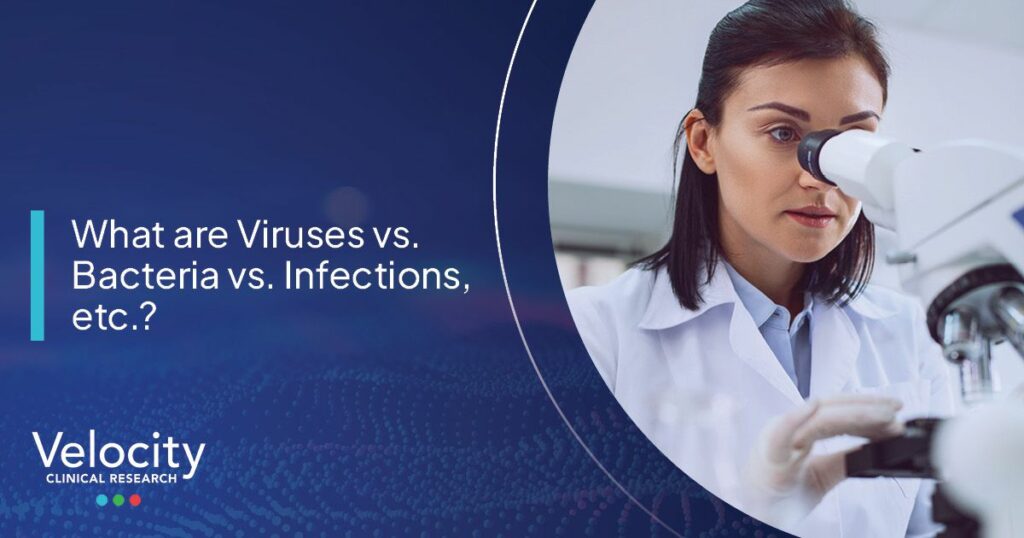In any medical setting, knowing the definition of a word or the difference between terms can help you be more engaged in a discussion about your health. When it comes to your understanding of your health, no questions should be off limits.
One question care providers often hear is, “So, I’m sick with this virus. Why can’t I get an antibiotic to treat it?” Knowing the difference between viruses, bacteria, and the infections they cause can help answer that question. But it starts with knowing what those words mean.
The following are words and terms we frequently see misused in social media comments. And not just by everyday people — these terms have been mixed up by many publications, politicians, and other public figures over the past year.
- Viruses are infective agents that replicate inside the cells of a living host organism.
- A disease is any condition in a living organism that impairs normal functioning, and typically causes symptoms. SARS-CoV-2 is a virus, and it can cause the disease COVID-19.
- Bacteria are microscopic organisms that are usually one-celled. Some bacteria can cause infections. SARS-CoV-2 is NOT a bacterium.
- Viruses can cause viral infections. Bacteria can cause bacterial infections. Antibiotic drugs can be used to kill bacterial infections, but not viral infections.
- Infections are diseases caused by the invasion and multiplication of microorganisms (e.g., viruses, bacteria).
- Pathogens are viruses, bacteria, or other microorganisms that can cause disease. SARS-CoV-2 is a viral pathogen.
- An epidemic is a temporary prevalence of a disease.
- A pandemic is an epidemic spread over a larger area, and is more accurately described as a, “a worldwide spread of a new disease.”

